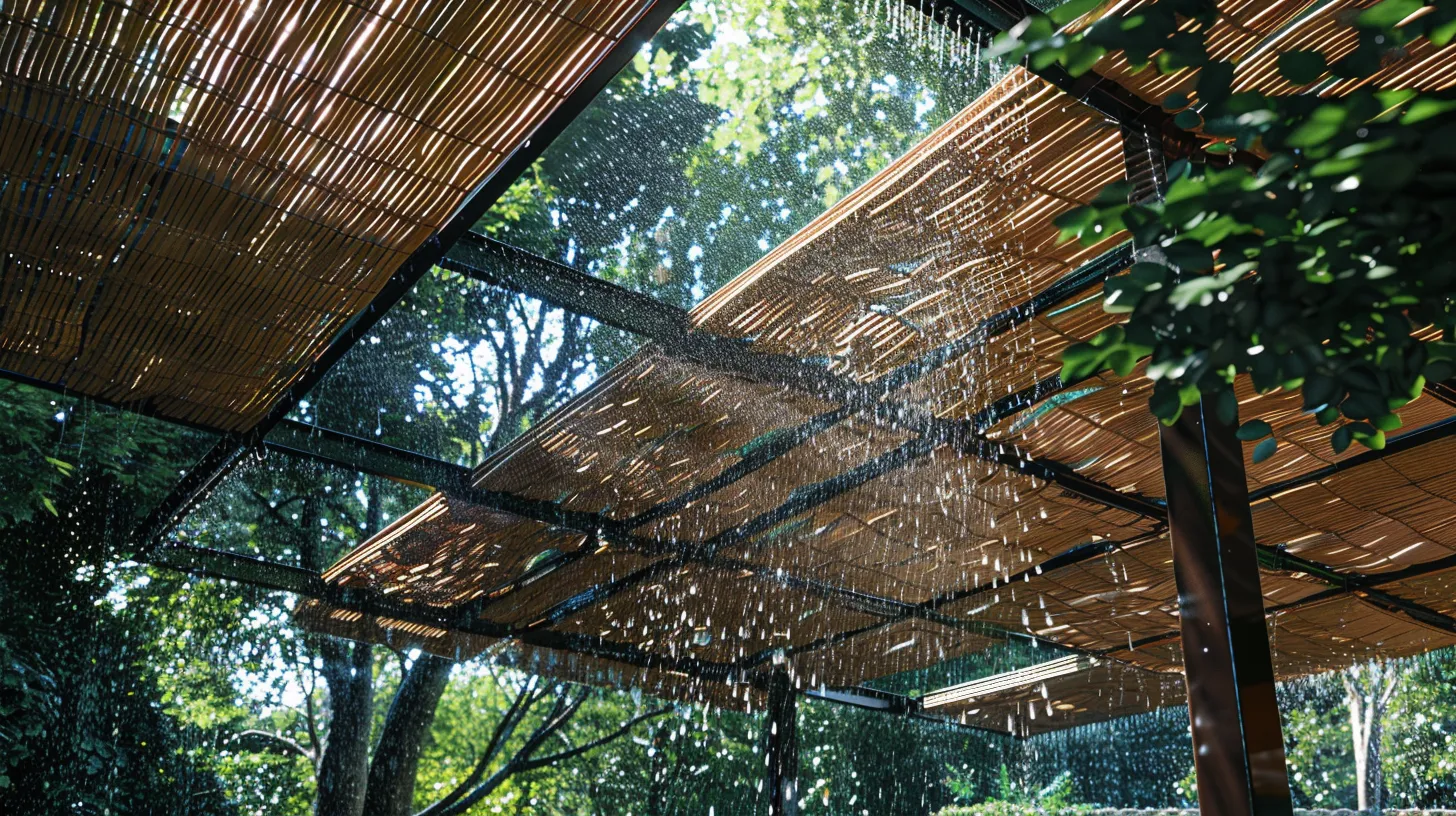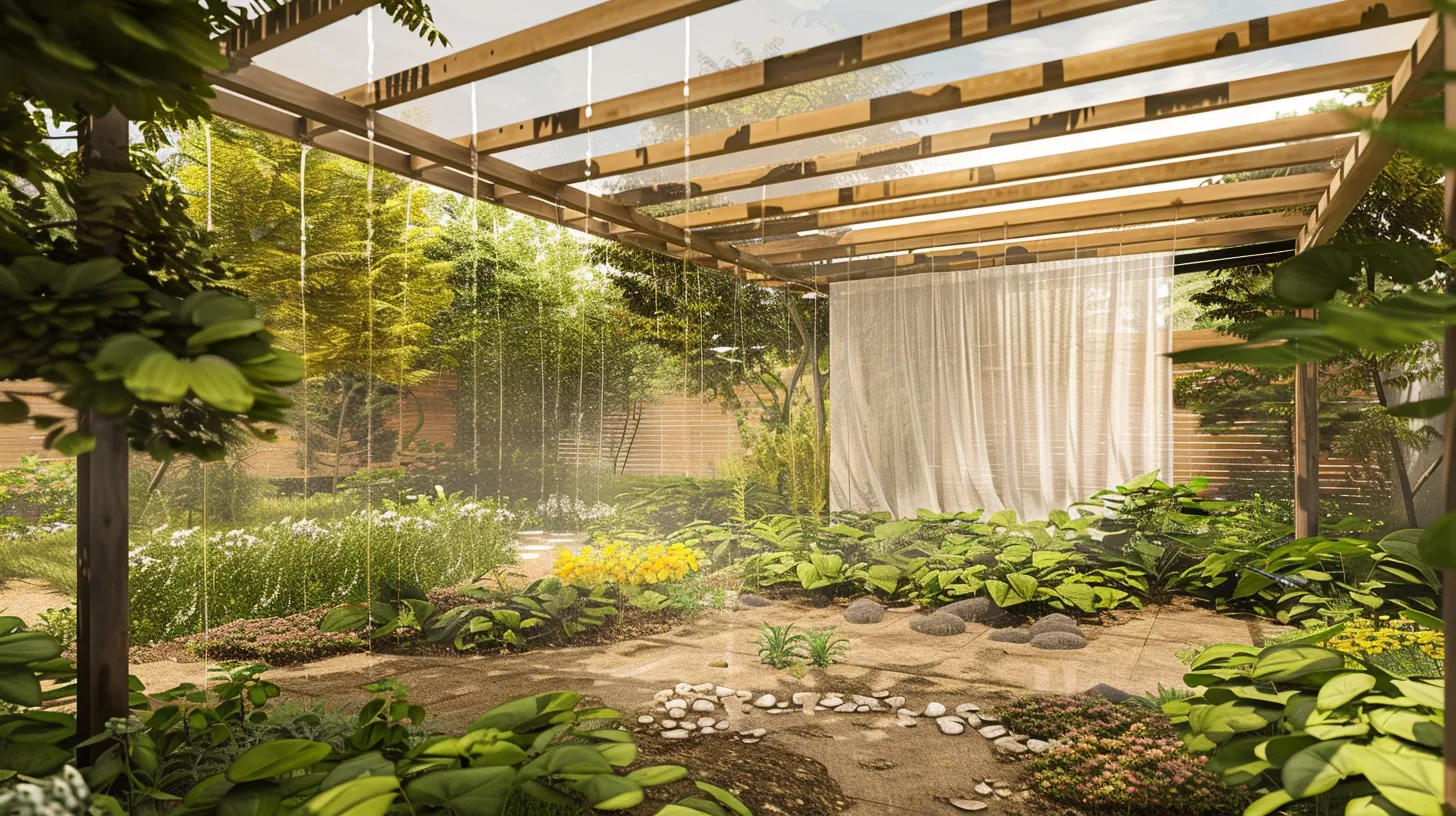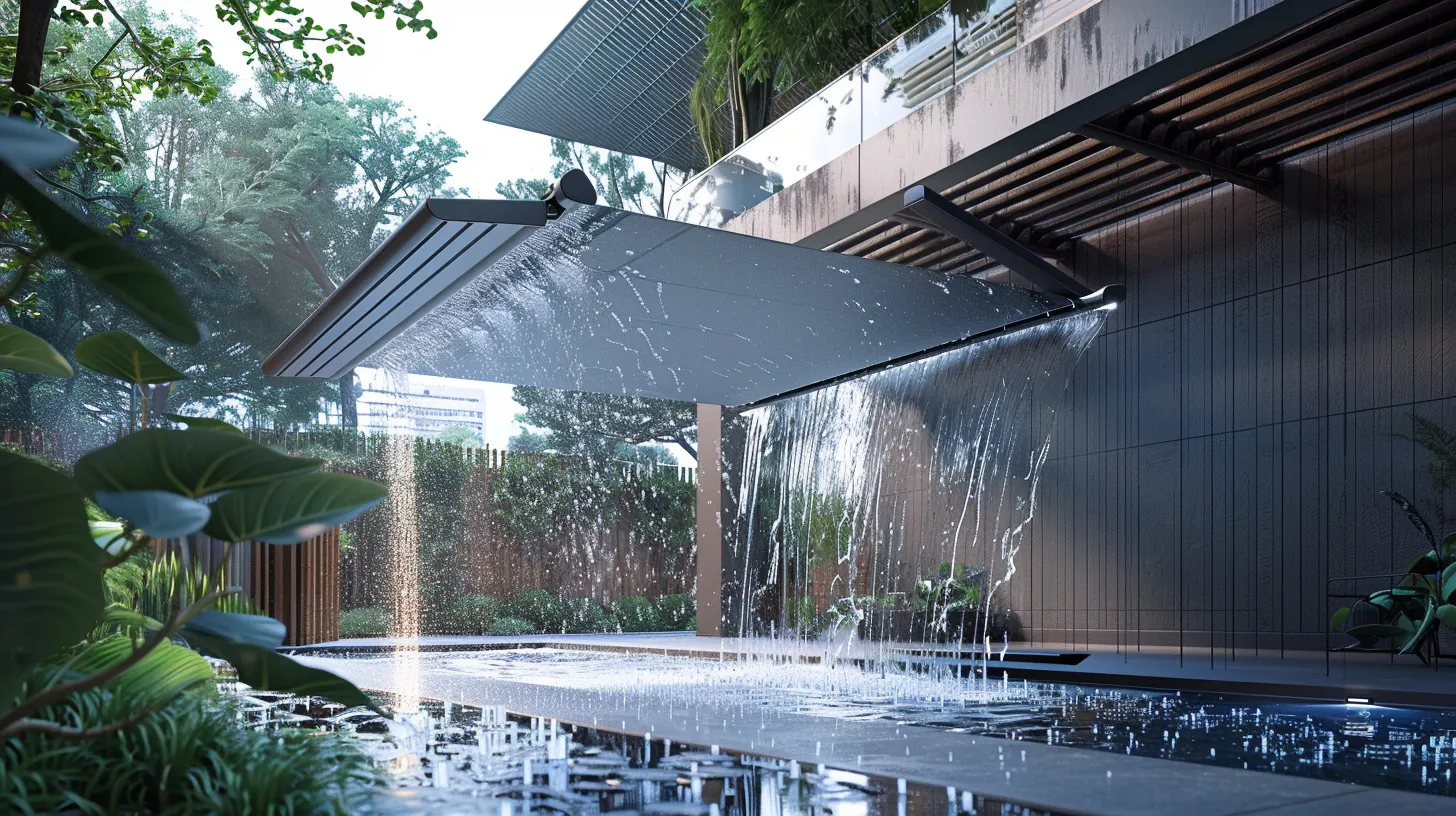Water pooling on a canopy not only poses a risk to the structure's integrity but also to the safety and comfort of those using it. Various strategies can significantly mitigate this issue, such as adjusting canopy tension, employing water diverter strips, or installing automatic tilt arms. However, the effectiveness of these solutions can vary depending on the canopy's design and the environmental conditions it's exposed to.
In the following discussion, we will explore these methods in detail, examining their advantages and potential limitations. Join us as we uncover the nuances of maintaining a dry and durable canopy, ensuring its longevity and functionality.
Understanding Water Pooling

Understanding water pooling is crucial for preventing the detrimental effects it can have on canopies, including sagging, stretching, and damage to both fabric and frame. Water pooling is often a result of several factors such as the use of low-quality materials, inadequate tension, and improper installation, which compromise the structural integrity and aesthetic appeal of the awning. To effectively prevent water from accumulating on the canopy, it is imperative to address these underlying causes.
Choosing a high-quality awning frame and fabric is the first step towards mitigating the risk of water pooling. Materials that are durable and designed to withstand environmental pressures, including heavy rainfall, can significantly reduce the likelihood of water accumulation. Ensuring the awning is in good condition through regular inspection and maintenance is also vital. This includes checking for any signs of wear and tear that could affect the canopy's ability to repel water efficiently.
Adjust Canopy Tension

How can adjusting the canopy's tension prevent water from pooling and ensure its longevity and visual appeal? By keeping the fabric taut, it is possible to significantly reduce the chances of water accumulation, which is a common issue with less-maintained canopies. Adjusting the tension of the canopy fabric is a critical step in promoting water runoff and preventing pooling. This action helps in maintaining the canopy's shape and prevents sagging, a common precursor to water pooling.
Ensuring the tension is adjusted evenly across the canopy is essential for effective water drainage. When the fabric is taut, it reduces the likelihood of water accumulation, which can lead to damage over time. Therefore, it is important to regularly check and adjust the tension of the canopy to avoid water pooling issues. This proactive measure not only helps in maintaining the structural integrity of the canopy but also enhances its visual appeal by preventing sagging and uneven wear.
Use Water Diverter Strips

Incorporating water diverter strips is an effective strategy for directing rainwater away from the canopy, thereby preventing the issue of water pooling. These strips are ingeniously designed to channel water off the awning, ensuring that the accumulation of water, which can lead to sagging or damage, is significantly minimized. Made from durable materials like PVC or aluminum, diverter strips stand the test of time against harsh weather conditions.
When considering the addition of diverter strips to a canopy, there are a few key points to keep in mind:
-
Installation : Attaching the strips along the canopy's edges is a straightforward process. It's crucial to position them correctly to guide water away from the center and towards a designated runoff area.
-
Maintenance : To guarantee that the diverter strips continue to perform optimally, regular maintenance is necessary. This involves checking for any signs of wear or damage and ensuring that the strips are securely attached.
-
Cleaning : Keeping the strips clean from debris, such as leaves and dirt, is essential for maintaining efficient water runoff.
Through careful installation, regular maintenance, and diligent cleaning, water diverter strips can provide a long-term solution to prevent water pooling on awnings, ensuring their longevity and functionality.
Install Automatic Tilt Arms

Installing automatic tilt arms on a canopy offers a dynamic solution for managing water runoff, effectively preventing the accumulation of water and ensuring the structure remains dry and undamaged. The introduction of these innovative arms into the design of a canopy significantly ameliorates concerns related to water pooling, a common issue that can lead to structural wear and tear over time. By enabling the adjustment of the canopy angle, these devices ensure that water is swiftly and efficiently directed away from the surface.
The functionality of automatic tilt arms is enhanced by their ability to be controlled remotely or set on a timer, providing a convenient and hands-free solution for canopy maintenance. This level of control and automation not only promotes the longevity of the canopy by preventing water pooling but also improves the overall efficiency and utility of the structure.
Furthermore, the installation of automatic tilt arms is an investment in the durability and functionality of a canopy. By automatically adjusting the canopy angle to optimize water runoff, these arms play a crucial role in maintaining the canopy's condition, thereby enhancing its functionality and ensuring it remains a reliable shelter against the elements.
Regular Maintenance Tips

To ensure the longevity and optimal performance of a canopy, regular maintenance is paramount, encompassing practices such as cleaning, inspecting for damage, and applying protective treatments. Addressing these aspects systematically can significantly mitigate issues like water pooling, which not only affects the functionality but also the lifespan of the canopy.
Here are three essential maintenance tips to prevent water pooling:
-
Regular Cleaning : Frequent cleaning of the canopy is crucial to avoid debris buildup, which can obstruct drainage areas and lead to water pooling. Ensuring that the canopy fabric and frame are free from leaves, twigs, and other debris will promote better water runoff.
-
Inspection and Repair : Periodically check the canopy fabric for any tears or holes and the frame for signs of damage or rust. Promptly patching the fabric and addressing frame issues is vital to maintain the canopy's water resistance and structural integrity, preventing water from pooling.
-
Preventive Treatments : Trim overhanging tree branches to reduce the likelihood of debris accumulation. Additionally, applying a water repellent spray on the canopy fabric annually can greatly enhance its resistance to water, helping to prevent pooling and prolonging the fabric's durability.










